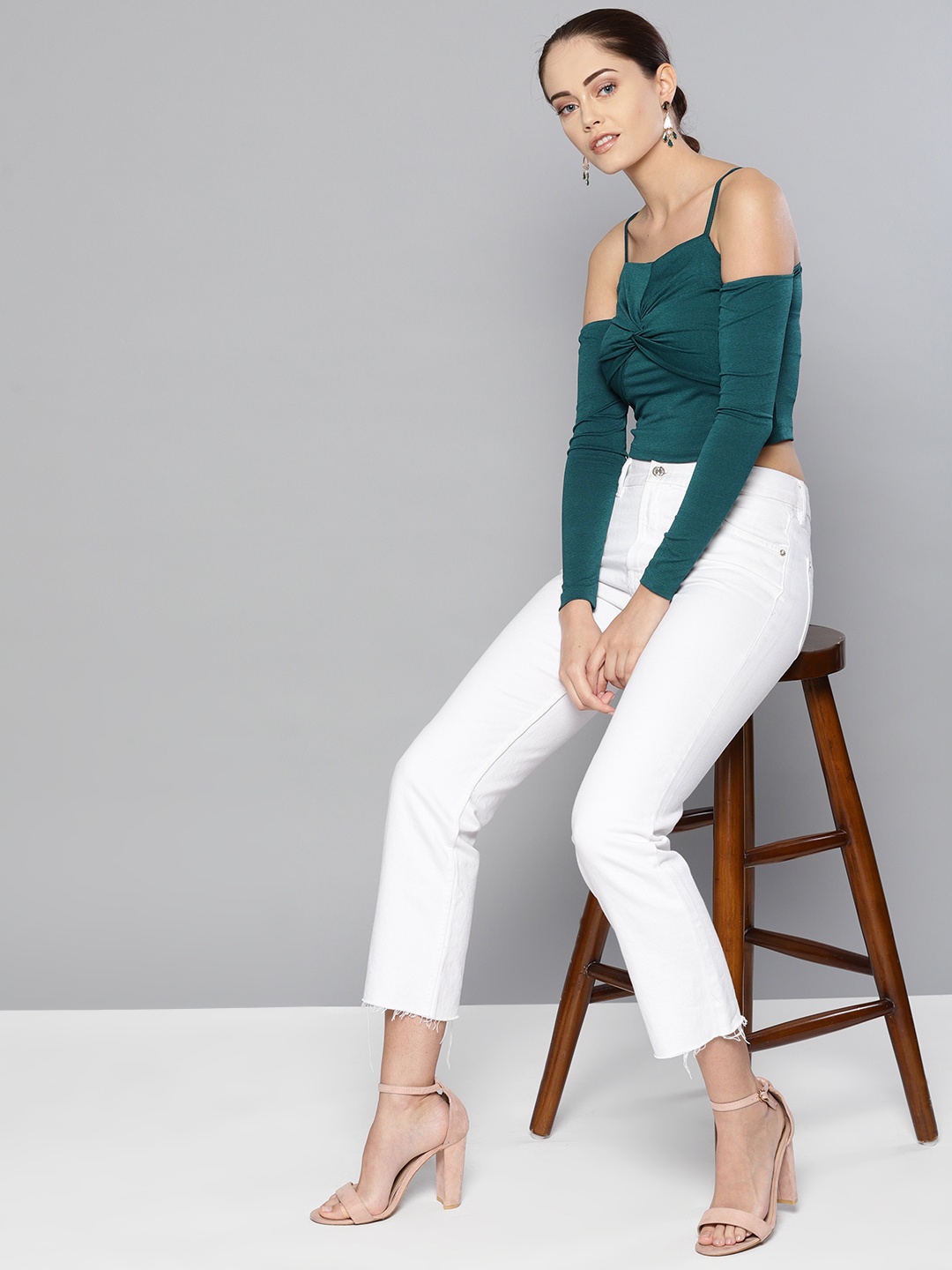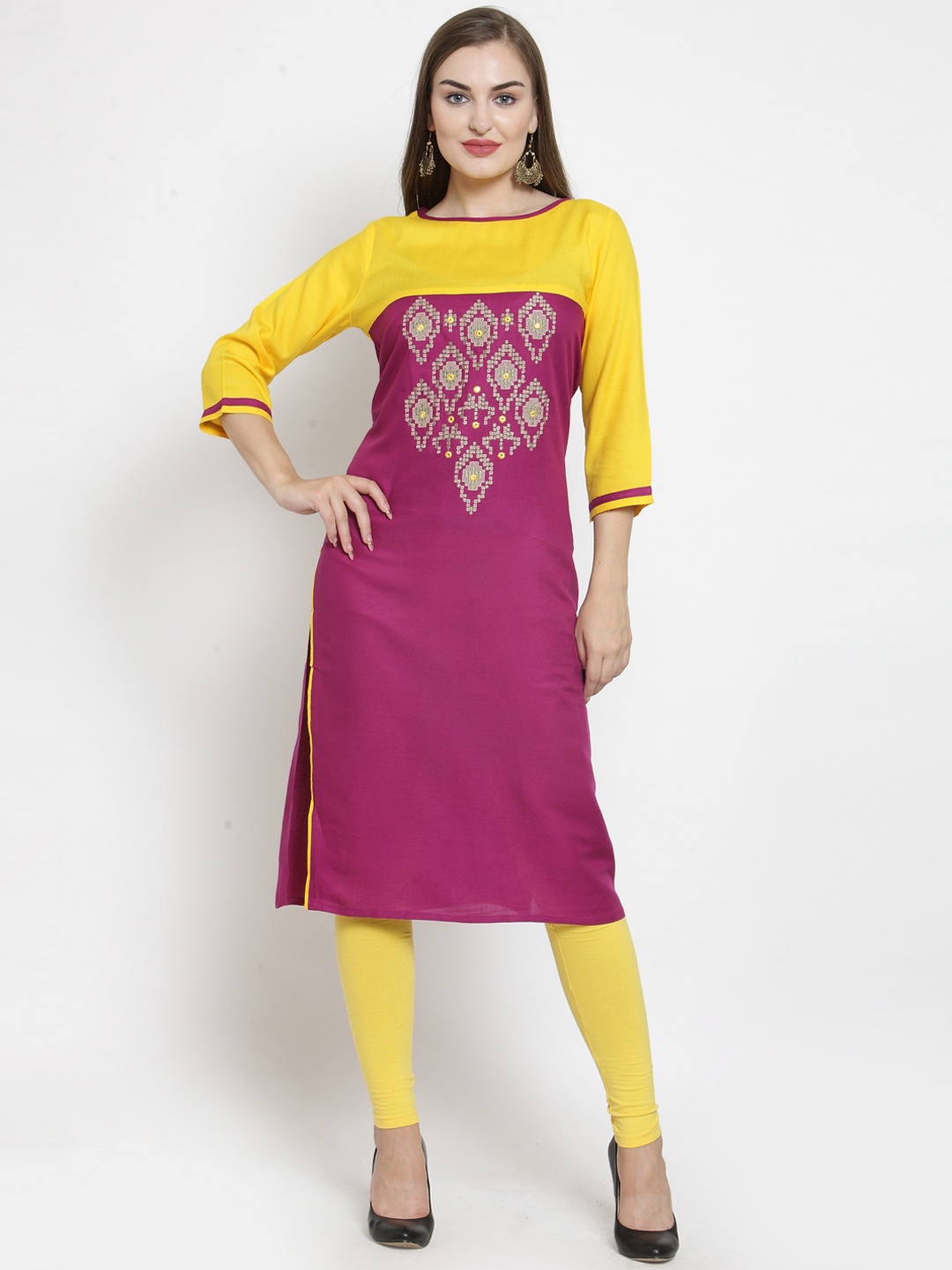How To Drape A Dupatta: 10 Stylish Ways To Flatter A Straight-Cut Kurta
From college to festive gatherings, the way you drape your dupatta can transform your entire silhouette. This style guide will help you add shape, charm and personality to your straight-cut kurtas, one drape at a time.

Improve your dupatta draping style with these helpful tips.
Straight-cut kurtas have a timeless grace, effortlessly walking the line between comfort and elegance. They're the everyday heroes of wardrobes, flattering, easy to style, and perfect for almost every occasion. But while their straight silhouette offers simplicity, it sometimes leaves the outfit looking a bit too, well, straight.

Drape your dupatta fashionably with these styling tips; Photo Credit: Pexels
That's where the dupatta swoops in like a fabric fairy godmother. A twist here, a tuck there, and suddenly, your kurta looks more defined, shapely, and elevated. The dupatta, when styled thoughtfully, can highlight the waist, elongate the frame, or even create the illusion of curves. From traditional folds to experimental drapes, it's all about how you let the fabric fall.
Here are the best dupatta draping tricks that add shape to straight-cut kurtas for an instantly flattering, elegant, and modern look. Check out these 10 dupatta draping tricks that turn your straight-cut kurta into an attractive outfit.
Also Read: How to Choose The Right Dupatta Shade For Bright Kurtas: Easy Styling Tips To Balance Bold Colours
Style It Right: Dupatta Drapes That Define, Shape And Shine
1. The Side-Swept Elegance
There's something graceful about a dupatta casually swept over one shoulder. It's a drape that spells effortless charm. Pin one end neatly on your left shoulder, letting the rest fall diagonally across your torso and flow freely at the back.
This trick works beautifully because it adds a diagonal line to your straight-cut kurta, instantly breaking the monotony and creating an illusion of movement. The diagonal fall defines the waist and adds a soft curve to your frame without being too fussy.
Choose lightweight fabrics like chiffon or georgette; they flow better and don't bulk up. Add statement earrings, and you're ready for anything from a brunch to a casual puja. The best part? This style feels spontaneous yet chic, the kind that says, “Oh, I just threw this on,” while secretly looking like a fashion pro.
2. The Belted Drapery
A simple belt can work wonders when paired with a dupatta. Place the dupatta evenly on both shoulders, let it flow naturally down the front, and then cinch your waist with a sleek belt. The result? A beautifully defined waistline that transforms the straight silhouette into something structured and stylish.
This technique isn't just flattering, it's practical too. Your dupatta stays in place all day, even through a busy schedule of errands, office meetings, or festive dancing. A slim metallic belt gives a modern twist, while a fabric or embroidered one keeps it traditional.
Pair it with jhumkas and kolhapuris, and you've got a look that's equal parts functional and fashionable. Think of it as blending tradition with a sprinkle of contemporary flair, comfort meeting confidence.
3. The Classic Front Flow
Sometimes, the simplest styles are the most striking. Drape your dupatta evenly over both shoulders, letting it fall symmetrically in the front. It's the go-to style for those who prefer balanced elegance with a hint of authority.
This drape elongates the body, especially when worn with a straight kurta in solid colours. The long vertical lines give an illusion of height and shape. For an added touch, pin the fabric lightly near the shoulders, letting it skim your figure naturally.
To elevate the look, play with textures. A lightly embroidered chiffon dupatta can soften a plain cotton kurta, while a bold printed one can bring life to a muted outfit. It's the kind of style that transitions seamlessly from a college day to an evening chai catch-up with friends.

You can go for the classic front flow dupatta drape
Photo Credit: Pexels
4. The Shoulder Loop Style
Perfect for those who want a polished yet playful look, the shoulder loop drape adds instant volume and drama. Take one end of the dupatta, place it over your right shoulder, loop it around your back, and bring it over the same shoulder again. Let the other end hang freely at the front.
This style defines your upper body beautifully while adding dimension to a straight kurta. It draws attention to the neckline and shoulders, making it ideal for kurtas with subtle embroidery or yoke detailing.
Opt for soft, flowy fabrics for an elegant cascade, or experiment with cotton for a more structured appearance. Add a small bindi and jhumkas for that charming, festive touch. It's the kind of drape that feels both traditional and trend-aware.
5. The Over-the-Head Grace
There's a certain quiet sophistication in the over-the-head style, something that instantly adds poise. Place one end of the dupatta over your head, with the rest flowing over your shoulders and chest. You can pin it neatly at one side or let it drape freely for a softer look.
This technique doesn't just look elegant; it subtly adds shape by framing your upper body and creating gentle folds that taper towards the waist. It's a style that brings back memories of festivals and family photos, but when done with sheer or organza dupattas, it looks refreshingly modern.
Pair it with minimal jewellery and sleek hair for an understated yet timeless effect. It's modest, graceful, and perfect for moments that call for tradition with finesse.
6. The Cowl Drape
If you love experimenting with layers, the cowl drape is your new best friend. Drape the dupatta around your neck like a stole, letting both ends fall loosely in the front. Then, pull a bit of fabric from the centre to create a soft cowl effect.
This style adds volume around the upper body, balancing the straightness of the kurta while giving a modern, layered appeal. It's great for slightly structured or short kurtas too, offering a fusion touch without compromising comfort.
Go for silk-blend or modal dupattas for this look, they fall beautifully and maintain shape. Pair it with chunky bangles or oxidised silver earrings, and you're good to go for an art fair, café meet-up, or festive gathering.

The cowl style draping adds layers to your outfit; Photo Credit: Pexels
7. The Diagonal Drape
Here's where geometry meets grace. Take your dupatta and drape it diagonally across your torso, from one shoulder to the opposite hip, then let it flow freely at the back. This creates a defined waistline and adds a sleek, angular effect that visually sculpts your body.
The diagonal line breaks the monotony of straight cuts, adding movement and shape. It's especially flattering for those who prefer a sharper silhouette. This look works well with stiffer fabrics like tussar or silk-blend dupattas that hold structure.
It's a confident, statement-making style, perfect for weddings, festive dinners, or when you simply want to look like you've made an effort without overdoing it. Add a clutch and heels, and you're set for an evening that's both comfortable and camera-ready.
8. The One-Shoulder Wrap
This style brings a contemporary twist to traditional wear. Place the dupatta on one shoulder, wrap it snugly around your waist, and secure it at the back or side with a pin. What you get is a cinched-in effect that adds curves and defines your shape without a belt.
The wrap creates a flattering contour along your torso while keeping the overall look neat and poised. It's especially handy for long events where you don't want your dupatta slipping off every few minutes.
A contrasting dupatta adds more visual interest, think a white kurta with a colourful bandhani or mirror-work piece. Slip into juttis, tie your hair in a low bun, and let the compliments roll in.
9. The Half Saree Illusion
For days when you want a touch of drama, this one's unbeatable. Take one end of your dupatta, pleat it neatly, and tuck it at your waist like a saree pallu. Then bring the other end over the opposite shoulder, letting it fall gracefully at the back.
This drape adds instant structure and shape, giving your straight kurta a graceful flare. It also channels the nostalgia of classic regional styles while keeping the comfort of a kurta intact.
Light cottons and silks work best here; they hold pleats beautifully. Pair the look with bangles, a statement bindi, and heels for that festive flair. It's a perfect example of how a simple styling trick can make you feel both rooted and radiant.

The half-saree illusion of dupattas is another creative way to style; Photo Credit: Pexels
10. The Cape-Style Cover
The cape drape is a modern favourite for those who love to blend tradition with trend. Drape the dupatta around your shoulders like a cape, pinning it near the collarbone so that it flows evenly down the back.
This gives your outfit a structured yet fluid shape, adding movement without bulk. It's flattering because it creates layers that frame your body elegantly while keeping the overall look light.
Perfect for evening events or semi-formal gatherings, this drape looks stunning with embroidered or embellished dupattas. Add statement heels and a clutch for a refined finish. It's a modern reinvention of a classic element, graceful yet powerful.
Products Related To This Article
1. Sangria Floral Printed Chiffon Dupatta
2. Soch Navy Blue Embroidered Dupatta with Thread Work
3. Clora Creation Off-White Striped Dupatta
4. Dupatta Bazaar Pink & Gold-Toned Woven Design Banarasi Silk Dupatta
5. Melange by Lifestyle Floral Embroidered Chanderi Dupatta
6. Taavi Solid Tasselled Dupatta with Zari
7. HERE&NOW Yellow & White Floral Printed Cotton Dupatta
A straight-cut kurta is like a blank canvas, elegant, versatile, and ready for transformation. The dupatta, on the other hand, is the brush that adds shape, colour, and expression. Whether it's the drama of a diagonal drape or the simplicity of a front fall, the right styling can redefine how a kurta looks and feels.
The beauty lies in the details, the flick of fabric, the play of texture, the way a drape catches the breeze as you walk. It's not just fashion; it's storytelling in motion. So next time you stand before your mirror, don't just pick a dupatta, style it. Let it frame your strength, your grace, and your unique sense of self. Because sometimes, a well-draped dupatta isn't just part of the outfit, it is the outfit.
Disclaimer: The images used in this article are for illustration purpose only. They may not be an exact representation of the products, categories and brands listed in this article.

























